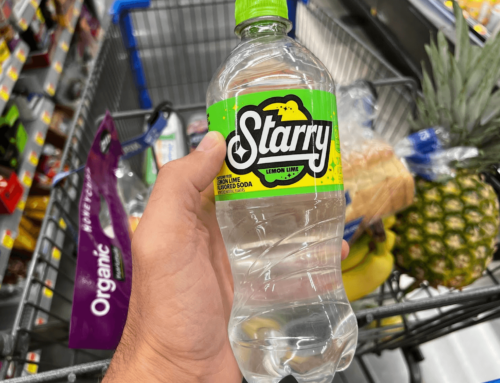Remember when chugging a sports drink made think you could improve your recreation basketball game? Think of Tune Squad in Space Jam to see how this beverage was positioned in the market during the early days of the product being marketed. According to studies, 31% of young adults (ages 20 – 34) consume sports drinks at least one time per week with the goal of hydrating faster after a workout or replenishing athletes’ nutrients during a game.
The emergence of the energy drink market has cut into the sports drink segment, much like what it did with the carbonated soft drink market. This can mainly be attributed to consumers changing lifestyles and consumption geared mostly towards much healthier food and drink intake.
Let’s take a look at the state of the sports drink segment, and how it continues to thrive despite consumer’s ever-changing habits and lifestyle.
Sports Drink Statistics

Gatorade is a market leader in the sports drink category. Photo Credit: Pinterest
Sports drinks are typically classified into three types: Hypotonic sports drink, Hypertonic sports drink, and Isotonic sports drink, with the latter the most popular among the three. (Science Direct)
The sports drink market is currently segmented into grape, fruit punch, lemon, mixed berries, orange, and mixed fruits in terms of flavors.
It is believed that the introduction of healthy tea options in the soft drink market is affecting the growth of sports drinks. (News Channel Nebraska Central)
Gatorade contains 158 calories, 238 milligrams of sodium, 32 grams of sugar, and 39 grams of carbohydrates per 21.4 ounces of serving. (Science Direct)
By ingredient type, sports drinks are segmented into Salts & Electrolytes, Flavors, Carbohydrates and Vitamins, Citric Acid, and Preservatives just to name a few. (Market Watch)
Millennials trying out new products with health benefits, aging adults looking for added strength, and energetic consumers looking for “quick vigor” are just some of the non-traditional consumer segments driving the sports drink market. (Research and Markets)
A typical sports drink has minute amounts of electrolytes in the form of salts, commonly labeled as Sodium. Six to nine percent Carbohydrate content weight per volume is also a common ingredient of your popular sports drink. (Science Direct)
Some industry players are looking into incorporating CBD into their sports drinks. Cannabidiol or CBD which is an active ingredient of cannabis is popularly known to have anti-inflammatory properties. However, CBD is still regarded as a Schedule 1 drug which is prohibited by the United States as a food product or dietary supplement. (Nutritional Outlook)
Consumer lifestyle shifts towards living a healthier life as well as the addition of new flavors with supplemental health benefits are just some of the aspects of driving the sports drink market. (News Channel Nebraska Central)
Despite slow growth, the continued appeal of sports drinks can be attributed to the increasing number of sports professionals and athletes around the world. (EIN News)
Sports Drink Consumption in the United States
In the U.S., the sports drink per capita consumption marked up from 4.3 gallons last 2013 to 5.11 gallons in 2017. (Mordor Intelligence)
In 2016, Gatorade Perform was the top-performing sports drink brand in the U.S. with a whopping sales of $3.3 billion, taking a 52.8% market share. (Statista)
Last year, North America continued to dominate the sports drink market in terms of revenue. This can be attributed to the popularity of fitness and athleticism in the country as well as the populace continued changing lifestyles. (EIN News)
In 2017, the sports drink experienced a moderate decline in sales after showing a strong trend in recent years. This can be associated with the decline in carbonated soft drink consumption due to health concerns on sugary drinks. (Euromonitor International)
PepsiCo., Coca-Cola Co., Arizona Beverage Company, Monster Beverage Co., Cloud 9, Red bull, AJE Group, Living Essentials, and Extreme Drinks Co. are just some of the key players in the U.S. sports drink market. (Market’s Gazette)
Within the forecast period from 2019 to 2024, the U.S. sports drink market is expected to reach a CAGR of 3.8%. (Mordor Intelligence)
In 2015, the sales volume of sports drinks in the United States reached 999.7 million in 192-oz. cases, this captured 32.2% market share of the non-carbonated soft drink segment. (Statista)
Being in the same segment, energy drinks and sports drinks are exhibiting identical trends as consumers start to show overlapping choices. Some athletes are looking towards energy drinks to give them stamina during pre-workout, while also energizing them after a workout. (Euromonitor International)

Powerade Mountain Blast. Photo Credit: Pinterest
Increasing health consciousness, the emergence of athleticism, and shift in dietary patterns are just some of the reasons why the United States will continue to be one of the leading markets in the sports drink industry for the forecast period 2019 – 2024. (Markets Gazette)
One demographic that is expected to be one of the drivers of sports drink growth are older adults. Their changing attitude towards fitness and health will be vital to the sports drink segment. (Mordor Intelligence)
Reduced sugar sports drinks have seen poor performance, until recently when it made waves and recovered to fare well in the sports drink segment. Changing habits for a healthier lifestyle has made this possible. (Euromonitor International)
The sports drink segment is also receiving a boost from Millennials which have an inclination towards a healthier lifestyle and have better buying capacity across various demographics. (Markets Gazette)
Global Consumption Trends
In 2018, the worldwide sports drink market was valued at $22.37 billion, growing at a steady CAGR over a forecast period into the year 2025. (Grand View Research)
Improving global economic conditions, a growing health-conscious society, and thriving urbanization have led to the continued expansion of the global sports drink segment. (Market Watch)
Just like in the U.S. sports drink segment, consumers choice for a healthier lifestyle, consuming a nutritious and balanced diet, as well as the introduction of new, more natural sports drink variants are expected to drive the global sports drink segment. (Research and Markets)
Captivating endorsements featuring popular global athletes is just one of the growth drivers being used by beverage companies in the Asia-Pacific region. (News Channel Nebraska Central)
Beverage companies are also focusing on each age group, determining their interests to introduce new flavors as well as health benefits which would drive growth into the segment.
Preference for organic and natural ingredients as well as some side effects associated with regular sports drinks are some of the factors preventing its growth. Sports drinks with natural ingredients are projected to thrust the market growth of the sports drink segment in the future. (EIN News)
The global sports drink market is dominated by some key manufacturers which include: Coca Cola, D’angelo, Arizona Beverage Company, Britvic plc., Pepsico, AJE Group, GlaxoSmithKline plc., Extreme drinks, Champion nutrition Inc., Abbott Nutrition co., Fraser & Neave Holdings Bhd, Monster beverage co., and Arctico beverage company international Inc. (Market Watch)
As the more popular product type, isotonic sports drinks occupied the biggest market share last year. This product type is expected to reach $11.9 billion by the year 2025 and grow at a steady CAGR. (Grand View Research)
The shift to a healthier lifestyle has thrust the demand for sports nutrition beverages such as non-protein drinks, protein drinks, and herbal drinks incorporated into regular sports drinks.
Countries like Germany, France, Italy, and the U.K. has helped Europe to gain the 2nd largest market in the sports drink segment. The accessibility of world-class athletics and fitness centers along with a growing per capita income can be associated with this gain. (Market Watch)
Consumer Demographics and Ingredients
Certain brands are now integrating naturally invigorating additives such as green tea, ginseng, and green coffee into their products. Such products are also being labeled as clean declaring these as “natural energy”. (Nutritional Outlook)
Approximately 60% of men and 40% of women are sports drinkers in the United States. This trend is likely to boost the growth of the market through the year 2025. (Grand View Research)
Creating natural, plant-based ingredients is the response of sports drinks manufacturing to the growing clamor of health-conscious consumers. In fact, some of these manufacturers are turning into plant-derived proteins into their drink formulation. (Nutritional Outlook)
The Asia-Pacific’s hunger for natural sweeteners is anticipated to propel the sports drink market growth in the region. This can be attributed to the tailored sports drink made with no to low-calorie sweeteners created by manufacturers in the regional market. (Research and Markets)
New ingredients like nootropics and collagen are being introduced into new sports drink formulations. Thanks to their body-rebuilding and brain-improving properties, athletes are able to perform more efficient and recover quickly. (Nutritional Outlook)
Thanks to an ever-changing lifestyle, sports drinks are as popular as they’ve ever been since their introduction in the 1960s. The drinks hydrating and nutritional properties have made it a much more appealing thirst quencher compared to carbonated soda, which has seen declining consumption trends in the past two decades.
For increased consumption of the drink the the future incorporating nutritional supplements and natural ingredients into their formulas is essential. These components have helped the sports drink companies remain relevant to younger consumers. Like meat companies nowadays, sports drink companies are also turning to plant-derived ingredients to turn away from formulated drinks into a more socially responsible drink.
One of the big criticisms of sports drinks is they contain sugar as a main ingredient that’s been connected to obesity, type 2 diabetes and other health issues. Finding healthier alternatives to sugar for this sweet beverage will be key to making the product truly more healthy to consume and being positioned for further consumption growth.
Related Reading: 47 Snack Food Industry Trends and Consumption Statistics




